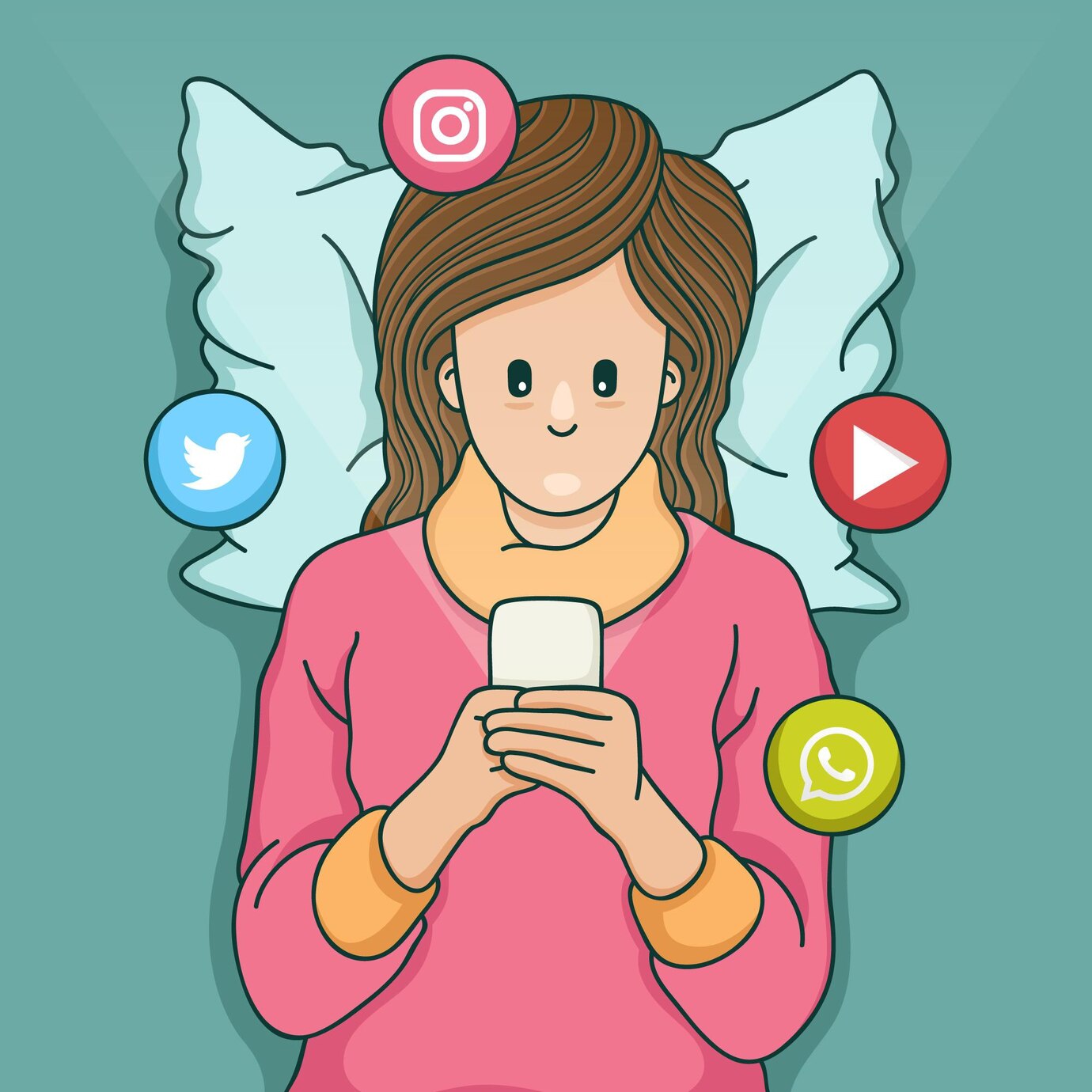In the age of connectivity, where social media platforms have become an integral part of daily life, understanding the complex relationship between social media and mental health is paramount. While these platforms offer unprecedented opportunities for communication, self expression, and information-sharing, they also present challenges that can significantly affect mental well being. This comprehensive exploration delves into the multifaceted impact of social media on mental health, offering insights into both the positive and negative dimensions of this digital landscape.
1. The Positive Aspects of Social Media:
a. Social Connection:
- Global Connectivity: Social media enables people to connect across geographical boundaries, fostering a sense of global community.
- Maintaining Relationships: Platforms like Facebook and Instagram facilitate the maintenance of relationships, allowing individuals to stay updated on each other’s lives.
b. Information and Awareness:
- Real-time Information: Social media serves as a real-time news source, keeping users informed about global events.
- Health Awareness Campaigns: Platforms are instrumental in spreading awareness about mental health issues, encouraging conversations around well-being.
c. Professional Opportunities:
- Networking: Platforms like LinkedIn provide avenues for professional networking and job opportunities.
- Entrepreneurial Platforms: Instagram and Twitter/X have become platforms for entrepreneurship, allowing individuals to showcase and sell products.
d. Self-expression and Creativity:
- Artistic Outlets: Platforms like Pinterest and YouTube provide spaces for creative expression, enabling artists, musicians, and content creators to share their work.
- Personal Blogs: Blogging platforms empower individuals to share personal stories and insights.
2. The Negative Impacts of Social Media:
a. Cyberbullying:
- Online Harassment: Cyberbullying, including harassment, threats, or social exclusion, is a pervasive issue affecting mental health.
- Impact on Adolescents: Adolescents are particularly vulnerable, with cyberbullying linked to increased anxiety and depression.
b. Social Comparison:
- FOMO (Fear of Missing Out): Constant exposure to curated, idealized versions of others’ lives can lead to feelings of inadequacy and FOMO.
- Body Image Issues: Platforms featuring unrealistic beauty standards contribute to body image concerns, especially among young users.
c. Addiction and Screen Time:
- Digital Addiction: Excessive use of social media can lead to addiction, impacting mental health negatively.
- Sleep Disruption: Prolonged screen time, especially before bedtime, is associated with sleep disturbances.
d. Impact on Self-Esteem:
- Validation Seeking: Seeking validation through likes and comments can lead to self-esteem issues when expectations are not met.
- Filtering and Editing: Filters and editing tools can distort reality, contributing to a distorted self-perception.
e. Political Polarization and Stress:
- Echo Chambers: Social media can create echo chambers where users are exposed only to like-minded views, contributing to increased polarization.
- Political Stress: Exposure to heated political discussions can lead to heightened stress levels.
3. Strategies for a Healthy Social Media Experience:
a. Digital Detox:
- Scheduled Breaks: Designate specific times for social media use and breaks to avoid constant connectivity.
- Unplug Before Bed: Disconnect from social media at least an hour before bedtime for better sleep quality.
b. Mindful Consumption:
- Curate Your Feed: Follow accounts that promote positivity, inspiration, and mental well-being.
- Limit Comparison: Be mindful of social comparison and recognize that people share curated versions of their lives.
c. Set Boundaries:
- Notifications Control: Adjust notification settings to prevent constant interruptions.
- Designate Tech-Free Zones: Establish areas or times where digital devices are not allowed.
d. Promote Positive Conversations:
- Mental Health Advocacy: Engage in positive conversations around mental health to reduce stigma.
- Report Cyberbullying: Actively report and discourage cyberbullying to create a safer digital environment.
e. Educational Initiatives:
- Media Literacy Programs: Implement media literacy programs to educate users, especially young people, about discerning between curated content and reality.
- Teach Healthy Social Media Use: Integrate discussions on healthy social media use into educational curricula.
4. The Role of Social Media Platforms:
a. Algorithm Transparency:
- User Empowerment: Platforms should offer transparent insights into how algorithms work, empowering users to make informed choices.
- Combatting Disinformation: Implement measures to curb the spread of misinformation and harmful content.
b. Mental Health Features:
- Well-being Tools: Social media platforms can integrate well-being tools, such as screen time tracking and reminders for breaks.
- Mental Health Support: Offer resources and helplines for users experiencing mental health challenges.
Conclusion:
The impact of social media on mental health is a nuanced interplay of positive and negative influences. Users, educators, and social media platforms all play pivotal roles in shaping a digital landscape that promotes well-being. By fostering awareness, encouraging mindful consumption, and implementing strategies for a healthy online experience, individuals can navigate social media in a way that enhances their lives rather than detracts from their mental health. As we continue to evolve in the digital age, understanding and addressing the complex dynamics between social media and mental health will be essential for creating a healthier and more supportive online environment.


